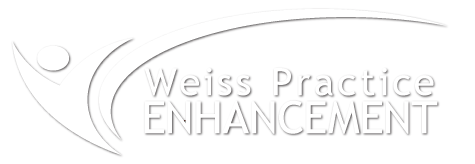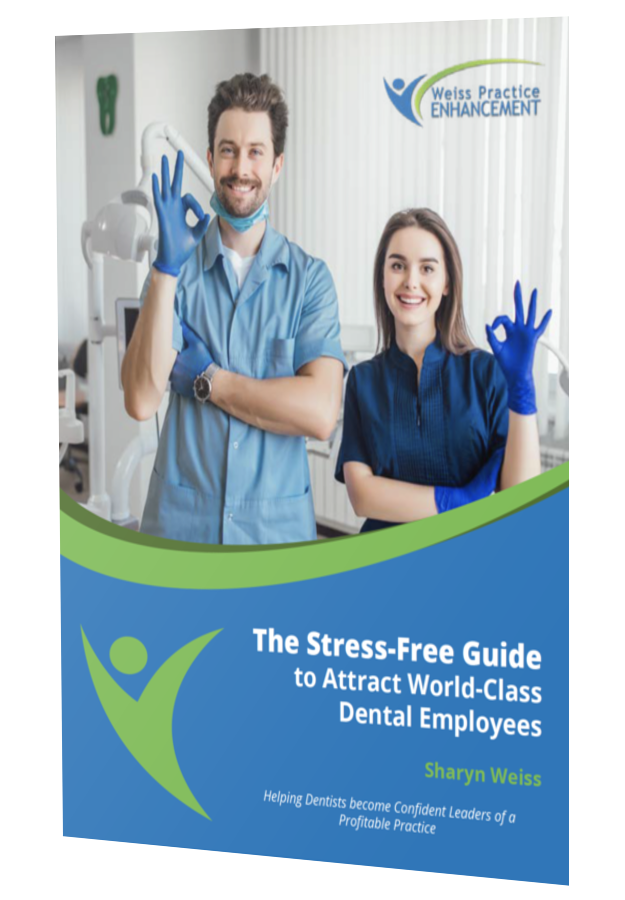Let’s answer some objections to doing treatment dialogues. As a dentist, you clearly want to increase your patient’s level of commitment to treatment and to home care. But the traditional treatment presentation, with the focus on delivering information in a five-minute monologue, isn’t conducive to inspiring patients.
A treatment dialogue, on the other hand, is designed to engage the patient through a series of questions. The goal is for patients to self-identify the benefits of treatment and to say to themselves “I want to do this,” rather than, “I guess I should do this because the dentist scared the **** out of me.”
I shared the treatment dialogue model in my article, How to Improve Case Acceptance https://weisspractice.com/improve-case-acceptance. You can also read about it in Dental Economics Dental Economics – February 2022.pdf. In this article, we’ll explore some objections to adapting the dialogue model.
1st Objection: Don’t patients want us to tell them what to do?
This was the question posed by a dental team who just learned the dialogue model. It’s a great question which gets to the heart of how this philosophy addresses motivation. It sure does seem easier and quicker to employ your expert persona and tell patients what they need to do to do. And for some patients, this is sufficient. But this isn’t true for everyone and if you’ve faced patients who have declined treatment year after year, then you have observed that simply telling patients about their issues isn’t enough to get them to solve those issues.
Let me ask you a question. As a clinician, which are you more focused on?
- Getting patients to understand their dental issues
- Getting patients to take action about their dental issues
You probably are thinking, “Well, I want both.” And that’s great, but if you simply deliver factual information to your patient, then your approach is to assume that facts will create the impetus to inspire change. Unfortunately, motivation doesn’t work like that.
- Do smokers continue to use tobacco despite knowing the consequences?
- Do people chug Mountain Dew and Coke despite wanting to lose weight?
- Do folks object to wearing masks or getting COVID vaccinees despite millions of deaths?
Yup-knowing something is bad for you doesn’t mean that you’re going to change your behavior. You can point to the consequences of not getting that crown until the cows come home, but you might as well be whistling in the wind, because most of us make our decisions through emotion not logic. (I love these mixed metaphors.)
If you really want patients to ACT on the information, then you need to change your approach from telling patients why you think this treatment is good for them, to helping your patient identify their own reasons they should do this treatment.
They need to connect emotionally to the results of the treatment.
This means you must ask questions.
- “I see the value in doing this right away, but what do you see as the most important benefits?”
- “How will your life be different when we’re able to take care of this problem?’
- “What would you most look forward to when we’ve completed this treatment?”
Michael Pantalon, in his book, Instant Influence, (2011) describes why the “tell and sell” approach doesn’t work.
“Three decades of scientific evidence clearly demonstrate that tell-and-sell methods not only fail to motivate; they also lower the lower motivation level…
So, what works?
Here’s the secret to Instant Influence: people take action when they hear themselves say why they want to (do something) pg. 19
People are motivated to act when they identify their own reasons to do so and when they perceive that changing will lead to positive results they desire. This is why this model is so much more powerful than pressuring or lecturing your patients into accepting treatment.
2nd Objection: I have five minutes to do an exam.
It’s true that you have limited time and, initially, engaging in a conversation with patients may take more time than simply delivering a diagnosis and shuffling them to the front desk. But consider what happens after a patient, who isn’t committed, leaves your operatory.
- Your front desk gives the patient the fee estimate.
- Because the patient wasn’t committed to the treatment, the patient expresses dismay at the fee and asks questions about the necessity of the treatment.
- Your employees try to answer your patients’ concerns while simultaneously juggling other patients.
- The patient asks to reduce the treatment plan which forces you back into the conversation.
- Or, the patient delays scheduling which means you and the team will repeat this process at the next hygiene appointment.
How much time and effort does this take? Wouldn’t it be better to have a 10-minute conversation where the patient is motivated to do the treatment rather than chasing down patients who are ambivalent?
Engaging in a treatment dialogue with patients means changing your approach, and that, of course will create some discomfort as you learn new skills.
In our next article, I will respond to additional objections so that you feel more confident about applying this model. Stay with me because this investment will translate to higher case acceptance with patients who feel more motivated.




